|
 Back to index Back to index
|
| Itineraries > Xixarra Greenway |
|
|
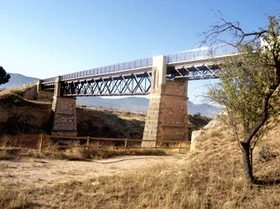
|
Alicante has a great wealth of abandoned railway lines running through its various rural districts. Our Greenway route makes use of 15 km of a total of 84km of a line on which the Xixarra train used to run.
From the Santuario de las Virtudes to the town of Biar we can enjoy the delights of the Alicante countryside and also link up with the Camino de Santiago del Sureste, which is the lesser known pilgrims’ way to Santiago de Compostela from the southeast of Spain.
|
| WRITE YOUR REVIEW
|
| Technical Data
|
|
 CONDITIONED GREENWAY CONDITIONED GREENWAY
|
Through the slopes of Sierra de Mariola
LOCATION
Between the Virtudes Sanctuary and Biar
ALICANTE
Length: 15 km
Type of surface:
Greenway with conditioned soil
|
|
 |
Natural setting:
SMariola ranges. Vinalopó, Agres and Serpis river valleys, Agres ravine
Cultural Heritage:
Biar castle, city centre momumental set of Biar
Infrastructure:
Greenway. 1 viaduct
How to get there:
Villena:Medium and long distance RENFE services, Madrid-Alicante line
(*) Please ask the conditions of bike admittance in Renfe trains
Connections:
Alicante: 56 Km to Alcoi
Valencia: 96 Km to Bocairent
 In the sanctuary of Las Virtudes you can connect with Xixarra I Greenway. In Biar you can connect with Xixarra III greenway, which connects in Alcoi with the Serpis greenway and with the Alcoi greenway In the sanctuary of Las Virtudes you can connect with Xixarra I Greenway. In Biar you can connect with Xixarra III greenway, which connects in Alcoi with the Serpis greenway and with the Alcoi greenway
More information on the Greenways guide Volume 1
|
|
|
|
| Description
|
|
Km. 0 / Km. 5 / Km. 10 / Km. 15
|
This 15 km route developed by the Provincial Government of Alicante as the Xixarra Greenway starts at the shelter of the Apeadero de Las Virtudes, from where we can see the Santuario de las Virtudes.
The actual railway begins at the town of Yecla (Murcia), 14 km away, but this first part of the route is not yet developed (Xixarra Greenway 1)
Km 0
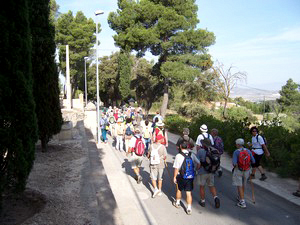 As is the case of all developed Greenways, the surface is good, the signposting is informative, motor traffic is restricted, and trees have been planted which, when grown, will not only provide welcome shade, but will also add a touch of elegance to our route into the streets of Villena. Two kilometres after leaving the Apeadero de Las Virtudes we arrive at the Las Virtudes station building. From here our Greenway runs parallel to the road that goes from the Santuario de las Virtudes to Villena. At km 3 we arrive at Salinas de Peñalva where there used to be a spur line to the loading facility of the salt works, of which now there is no trace. As we enter the area of the salt works there are two bridges (one for the old railway line and one for the road) across the Acequia del Rey, which is a dead straight canal running between these salt marshes and those of La Fortuna and La Redonda, 4 km to the north. As is the case of all developed Greenways, the surface is good, the signposting is informative, motor traffic is restricted, and trees have been planted which, when grown, will not only provide welcome shade, but will also add a touch of elegance to our route into the streets of Villena. Two kilometres after leaving the Apeadero de Las Virtudes we arrive at the Las Virtudes station building. From here our Greenway runs parallel to the road that goes from the Santuario de las Virtudes to Villena. At km 3 we arrive at Salinas de Peñalva where there used to be a spur line to the loading facility of the salt works, of which now there is no trace. As we enter the area of the salt works there are two bridges (one for the old railway line and one for the road) across the Acequia del Rey, which is a dead straight canal running between these salt marshes and those of La Fortuna and La Redonda, 4 km to the north.
Km 5
Just after passing the San Bartolomé hermitage (km 5) and still following the old railway line, the Greenway crosses the road and heads through vineyards on a shortcut to Villena. Once in Villena the old rail bed has been occupied by a new ring road, so our Greenway makes a detour and runs parallel to the active railway line until, at Km 8, we arrive at Villena railway station, the most important on our line. Opposite the active Renfe station we can still see the old station building, the goods platforms, and the workshops of the Xixarra line. We need to cross the lines and, once on the opposite side to the station, we turn right onto a street running parallel to the active railway lines. This street, which curves to the left, now occupies the rail bed of the old narrow gauge railway. As proof of the railway origins of this street we pass by a small, disused railway bridge.
Km 10
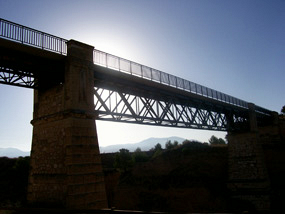 This street takes us to where the Biar road crosses under the Levante motorway via an underpass. Here we share the road with the cars (watch out – they drive like maniacs!) until we arrive at the municipal sports centre at the foot of the Sierra de la Villa (Km 10). Here we leave the cars to their fate and continue along the old railway line, now a quiet track between crop fields. We gradually get nearer to the spectacular ravine that the river Vinalopó, now almost always dry, has cut into the soft terrain. After a sharp bend we arrive at a bridge that was rebuilt, to its original design, by the Community of Valencia late in 2005, 33 years after it was dismantled (Km 13). It is not the only bridge on this Greenway that has been rebuilt, a sure sign of the importance being given to the development of disused railway lines in Spain. This street takes us to where the Biar road crosses under the Levante motorway via an underpass. Here we share the road with the cars (watch out – they drive like maniacs!) until we arrive at the municipal sports centre at the foot of the Sierra de la Villa (Km 10). Here we leave the cars to their fate and continue along the old railway line, now a quiet track between crop fields. We gradually get nearer to the spectacular ravine that the river Vinalopó, now almost always dry, has cut into the soft terrain. After a sharp bend we arrive at a bridge that was rebuilt, to its original design, by the Community of Valencia late in 2005, 33 years after it was dismantled (Km 13). It is not the only bridge on this Greenway that has been rebuilt, a sure sign of the importance being given to the development of disused railway lines in Spain.
Km 15
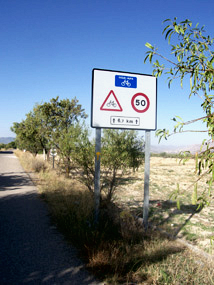 We continue along the trail to Biar which is an excellent state of repair. One kilometre further on the Greenway has been tarmacked to improve the surface for use by farm and other vehicles. At Km 15 we arrive at Biar railway station, now refurbished as a private house, from where we have a splendid view of the town overlooked by its impressive Templar castle. To round of this route we suggest you make your way to Biar’s magnificent town centre, just over one kilometre away from the station. If the Greenway has left you wanting more, from here you can link up with the Camino de Santiago del Sureste and cycle from one end of Spain to the other. We continue along the trail to Biar which is an excellent state of repair. One kilometre further on the Greenway has been tarmacked to improve the surface for use by farm and other vehicles. At Km 15 we arrive at Biar railway station, now refurbished as a private house, from where we have a splendid view of the town overlooked by its impressive Templar castle. To round of this route we suggest you make your way to Biar’s magnificent town centre, just over one kilometre away from the station. If the Greenway has left you wanting more, from here you can link up with the Camino de Santiago del Sureste and cycle from one end of Spain to the other.
After Biar the disused railway line continues on in the direction of Alcoy. However this section has not been developed and surfaces, signposting and the like are not always ideal, so we would advise prospective users to look into the conditions prevailing before embarking on this Greenway (Xixarra Greenway 3).
|
|
|
|
|
|
|
|
| Railway History
|
Our Greenway makes use of part of the route of two interconnected railways. One was the Villena-Alcoy-Yecla railway, commonly referred to as the "VAY" (and more popularly known as the Xixarra train) of which we use the Santuario de las Virtudes to Biar section. In spite of the name of the company, the Villena-Alcoy-Yecla railway never actually reached Alcoy. At Muro de Alcoy the line connected with the Alcoy-Gandía of the same gauge, but this was only possible after 1909, 25 years after the first train had run on the Villena to Banyeres sections. Meanwhile, at Jumilla the VAY also linked up with the similarly narrow gauge Jumilla-Cieza railway (part of the Ferrocarriles del Sudeste de España which only operated this one line.
The other section of lin
e used by the Greenway ran between Muro and Alcoy. This was part of the Gandía to Alcoy railway, originally operated by The Alcoy and Gandia Railway and Harbour Company Limited and inaugurated in1892
These lines lasted a relatively short time. In 1965 they were both taken over by the FEVE, which meant that the Xixarra trains could continue down to the coast at Gandía, connect with another FEVE line from Carcaixent to Denia and from there reach Alicante. However, a mere four years later both lines were closed for economic reasons.
Por el lado contrario, el VAY enlazaba en Jumilla con el trazado del ferrocarril Jumilla-Cieza (también de vía estrecha),
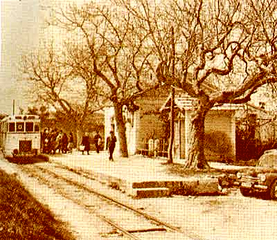
perteneciente a los Ferrocarriles del Sudeste de España, que explotaban esta única línea férrea. El otro tramo utilizado en esta ruta, entre Muro y Alcoi, pertenecía al ferrocarril de Gandía a Alcoi, regido en sus principios por la compañía The Alcoy Gandía and Harbour Railway Co. Ltd e inaugurado en 1892.
Estas líneas tuvieron una modesta vida. En 1965 pasaron a ser administradas por FEVE, continuando así los trenes del Xixarra hacia la costa, enlazando en Gandía con otra línea de FEVE, la que iba de Carcaixent a Denia y, desde allí, hacia Alicante. La crítica situación de la compañía hizo que ambas líneas fueran cerradas en 1969.
The day-to-day life of a modest railway line
This was a very modest and almost self-sufficient line; only the locomotives were brought in from outside builders, while the passenger coaches and railcars were hand-built in the company’s own workshops.
A curious feature of these trains is that they were never fitted with toilets which, as might be expected, gave rise to the occasional difficult moment. However, the lack of toilets on the train was made up for by the fact that most stations were equipped with toilets. And since the stations tended to be very close to one another, the passengers were normally able to hold on until the next stop, hoping that there would be no delay along the way. Under the circumstances, the engine drivers would always wait for passengers to empty their bladders and reboard the train, to resume their journey much relieved and much more comfortable.
Another story from the old days of the railway tells of the man who used to run a mobile postal service and who liked to play his game of cards at Agres station with the station master, the engine driver, and the ticket inspector, while the train waited for the connecting Renfe train and its passengers. On more than one occasion all the passengers on the train had to wait, however long it took, for a particularly crucial hand to be played, while hoping that the engine driver had not lost the game and so would not be in a bad mood when he got back to his locomotive.
One final anecdote from this railway concerns an engine driver who, on leaving Muro station, left behind a packed lunch prepared for the station master at Agres station. When he arrived at Agres and realized his mistake, to the amazement of his passengers he reversed back up the line to the station he had come from (no less than 19 km away) to pick up food: these were no times to be missing out on a packed lunch from home.
|
|
|
| Interesting Data
|
|
|
|
|
|
|
|
|
|
|
|
|
1. Festivals and holidays |
|
|
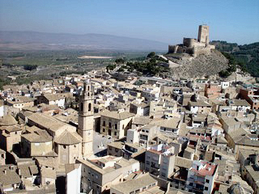
|
|
|
|
|
2. Accommodation |
|
|
|
|
|
|
3. Eco-tourism |
|
|
|
|
|
|
4. Managing Authority |
|
|
|
|
|
|
5. Town Councils |
|
|
|
|
|
|
6. Emergencies |
|
|
|
|
|
|
7. Coaches & buses |
|
|
|
|
|
|
8. Railway |
|
|
|
|
|
|
|
Festivals and holidays
|
 return return |
|
|
|
|
|
|
|
Biar
January 20 and 21
El Rei Páxaro. Fiestas en honor de San Antonio Abad
Easter
May 10 to 13
Fiestas de Moros y Cristianos
July 10
San Cristóbal, patrón de la Vila
July 13
Festeta del Cólera |
|
July 30
Els Sants de la Pedra, "Abdón y Senón"
August 16
Fiesta de San Roque
August 31
Fiesta de San Ramón
September 3 and 4
Festeta de Setembre |
|
|
|
|
|
|
|
|
|
|
|
|
Accommodation
|
 return return |
|
|
|
|
|
|
|
|
|
|
|
|
|
|
|
|
|
|
|
|
|
|
Eco-tourism
|
 return return |
|
|
|
|
|
|
|
|
|
|
|
|
|
|
|
|
|
|
|
|
Managing Authority
|
 return return |
|
|
|
|
|
|
|
Oficina de Turismo de Biar
AVDA. DE VILLENA, 2
03410 Biar-Alicante- (España)
Tel: +34 965 811 177
Fax: +34 965 811 934
E-mail: biar@touristinfo.net
www.biar.es
|
|
|
|
|
|
|
|
|
|
|
|
|
Town Councils
|
 return return |
|
|
|
|
|
|
|
Biar.
Telf. 96 581 03 74
Villena.
Telf. 96 580 11 50
|
|
|
|
|
|
|
|
|
|
|
|
|
|
|
Emergencies
|
 return return |
|
|
|
|
|
|
|
EMEREGENCIES: Telf. 062
Policia Local de Biar: 96 581 13 60
|
|
|
|
|
|
|
|
|
|
|
|
|
Coaches & buses
|
 return return |
|
|
|
|
|
|
|
Autobuses Montescar. (línea Villena-Biar) 96-580 11 73
Autobuses Alcoyana. (línea Castalla-Biar) 96-552 05 62 y 96-652 22 58
ALSA. (Conexiones Alicante-Villena). Estación de autobuses de Alicante. www.alsa.es
|
|
|
|
|
|
|
|
|
|
|
|
|
Railway
|
 return return |
|
|
|
|
|
|
|
Villena
Telf. Estación de Tren. 96 580 25 94 |
|
|
|
|
|
|
|
|
|
|
|
|
|
| Links
|
|
Página Oficial del Ayuntamiento de esta Localidad.
Web del Patronato Municipal de Turismo de Biar Información sobre zonas turísticas, restaurantes, alojamientos, tiendas, rutas, monumentos de Biar y alrededores.
Página Oficial del Ayuntamiento de esta Localidad.
Periódico digital de la población y comarca con información sobre los próximos eventos musicales, deportivos y culturales.
Portal oficial de turismo de la Comunitat Valenciana.
|
|
|
|
|
|
|
|
